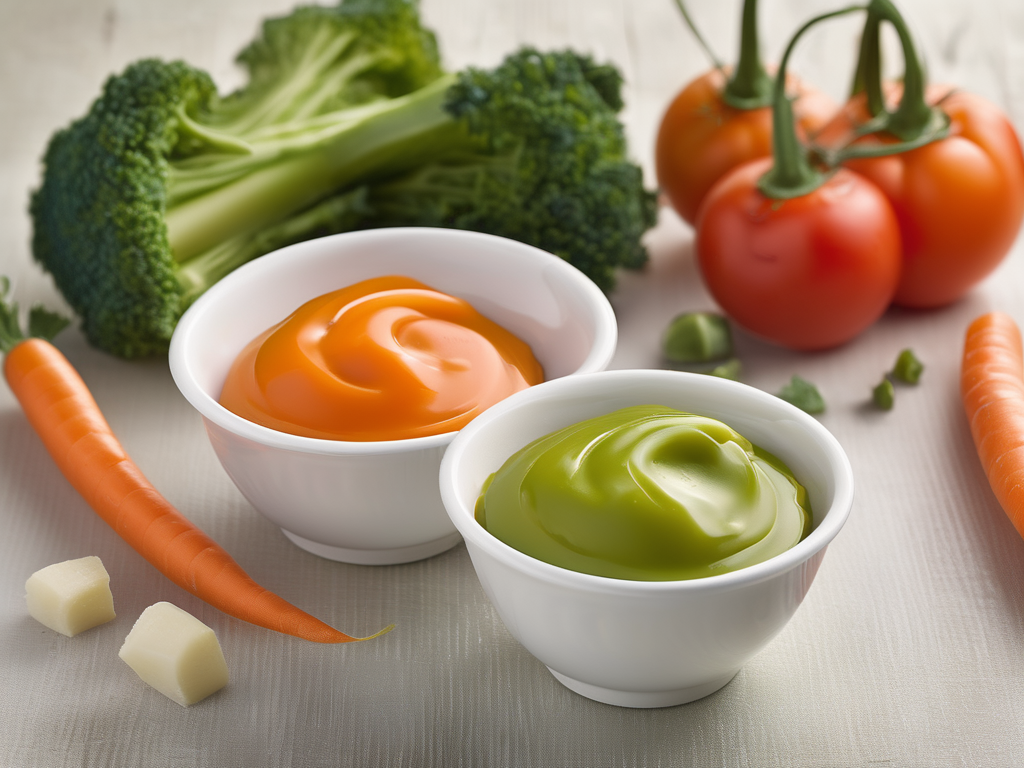
The Best Way to Store Mixed Vegetable Baby Food for Maximum Freshness
Get Your Free Food Safety Cheat Sheet
30 most common foods with instant answers. Print it and stick it on your fridge—completely free!
The Best Way to Store Mixed Vegetable Baby Food for Maximum Freshness
As a parent, ensuring the freshness and safety of your baby's food is of utmost importance. Proper storage of mixed vegetable baby food can help retain its nutritional value and taste, ensuring that your little one gets the best possible nourishment. In this blog post, we will discuss the best practices for storing mixed vegetable baby food to maintain its freshness and quality. (Mixed vegetable baby food)
Why Proper Storage is Important for Mixed Vegetable Baby Food
Proper storage of mixed vegetable baby food is crucial for several reasons:
- Preserving Nutritional Value: Storing baby food correctly helps retain essential nutrients, vitamins, and minerals present in the vegetables.
- Preventing Spoilage: Proper storage techniques can help prevent the growth of harmful bacteria that can lead to food spoilage and foodborne illnesses.
- Maintaining Taste and Texture: Freshly prepared baby food tastes better and has a smoother texture, providing a more enjoyable eating experience for your little one.
Tips for Storing Mixed Vegetable Baby Food
1. Use Airtight Containers
- H3 Ensure that the containers you use are airtight: Airtight containers help prevent air and moisture from seeping in, which can lead to spoilage.
- H3 Opt for glass containers: Glass containers are preferred over plastic ones as they are non-toxic and do not leach harmful chemicals into the food.
2. Label and Date the Containers
- H3 Labeling is key: Clearly label each container with the date of preparation to track freshness.
- H3 Use food-safe markers: Make sure to use markers that are safe for food contact to avoid any potential health risks.
3. Store in the Refrigerator
- H3 Refrigerate promptly: After preparing mixed vegetable baby food, refrigerate it promptly to slow down bacterial growth.
- H3 Ideal temperature: Keep the baby food in the refrigerator at a temperature below 40°F (4°C) to maintain freshness.
4. Freeze for Longer Storage
- H3 Freezing guidelines: If you want to store baby food for a longer period, consider freezing it in ice cube trays and transferring the frozen cubes to a freezer-safe bag.
- H3 Thawing safely: Thaw frozen baby food in the refrigerator or by using the defrost setting on the microwave to ensure safe consumption.
5. Avoid Cross-Contamination
- H3 Separate utensils: Use separate utensils for serving baby food to prevent cross-contamination with other foods.
- H3 Wash hands thoroughly: Always wash your hands before handling baby food to maintain hygiene.
Conclusion
Proper storage of mixed vegetable baby food is essential for maintaining its freshness, flavor, and nutritional value. By following the tips outlined in this blog post, you can ensure that your baby's food remains safe and enjoyable to eat. Remember to use airtight containers, label and date them, refrigerate promptly, consider freezing for longer storage, and avoid cross-contamination. Your baby deserves the best, so make sure to store their food properly for maximum freshness.
For more information on mixed vegetable baby food, check out our [mixed vegetable baby food](/food/mixed vegetable baby food) guide. (Mixed vegetable baby food)
Authoritative Food Safety References
These agencies and university labs inform every tip and health precaution we publish.
USDA FoodKeeper – Cold Storage Guidelines
Official refrigerator, freezer, and pantry timelines maintained by the U.S. Department of Agriculture.
Visit USDA FoodKeeperFDA Produce Safety Rule & Grower Guidance
Field-to-fridge handling practices that prevent contamination of fruits, vegetables, and leafy greens.
Visit FDA Produce SafetyCDC Foodborne Illness Prevention Hub
Surveillance-backed guidance on pathogens, symptoms, and steps to reduce foodborne illness risk.
Visit CDC Food SafetyUC Davis Postharvest Technology Center
University research detailing optimal storage atmospheres for produce after harvest.
Visit UC Davis PostharvestPenn State Extension – Home Food Preservation & Safety
Peer-reviewed extension bulletins on safe canning, chilling, and reheating practices.
Visit Penn State ExtensionGet Your Free Food Safety Cheat Sheet
30 most common foods with instant answers. Print it and stick it on your fridge—completely free! Want more? Upgrade to the complete guide with 70+ foods.
Scan your food directly and get instant safety info using our AI-powered camera feature.